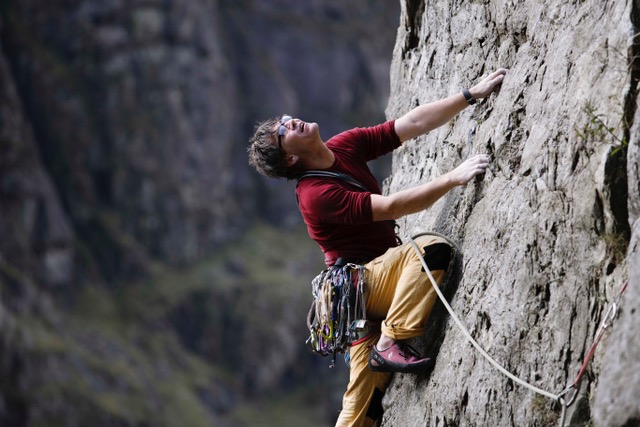Rock Climbing for Beginners: Placing Wires


Nut or Wires are the backbone of the modern trad climbing rack and knowing how to use them is vital. This article will teach you the basics but remember there is no substitute for being taught on a learn to trad climb course.
First off as a bare minimum you will need a complete rack of sizes 1 to 10 of wires. I recommend DMM and Wild Country wires because they are the most common in the UK. Although it is important to remember that most climbers carry around 21 wires or just over a double rack on three carabiners splitting them into small, medium and large with 7 wires on each carabiner.
This small, medium and large really helps with placing gear on routes. Once you get your eye in you can choose a rough size based on the size of the crack and pick a bunch of wires based on what sizes are most likely to fit.
In terms of placing a wire, you need to think about what shape they are and how they will wedge into a crack. So ideally you will find a crack that has a v-shaped wedge into which the wire can lodge itself. If you find an ideal place, which on many popular routes are often worn smooth and have a white appearance than the rest of the surrounding rock, then you need to check the solidity of the placement.
The solidity of the placement is vital for the integrity of the nut placement and is a vital check for all trad climbing runners. So look at the surrounding rock are there cracks that isolate either side of the crack. Does the crack go into the cliff or is it made by a stuck on plate of rock or flake which might mean the rock can be compromised? You can also tap the rock and see if it sounds hollow or try and move the rock with your hands and see if it moves.

If you happy with integrity placement choose the appropriately sized wire so there is a reasonable overlap between the size of the placement and the size of the crack.
You then need to seat the wire into the crack by using the other wires on the crab to jerk down on it. As you do so look at the wire and surrounding rock. Does the wire seat in and become solid if so all is good. If the rock moves then this could be a warning sign that the rock is slightly loose and perhaps the runner is less secure than you would like. You can then gently wiggle the wire to check it is securely seated and then clip it as either a runner or a point on the belay.

There is more advice and exercises on placing runners in ‘How To Climb Harder‘ by Snowdonia Mountain Guides’ Mark Reeves.